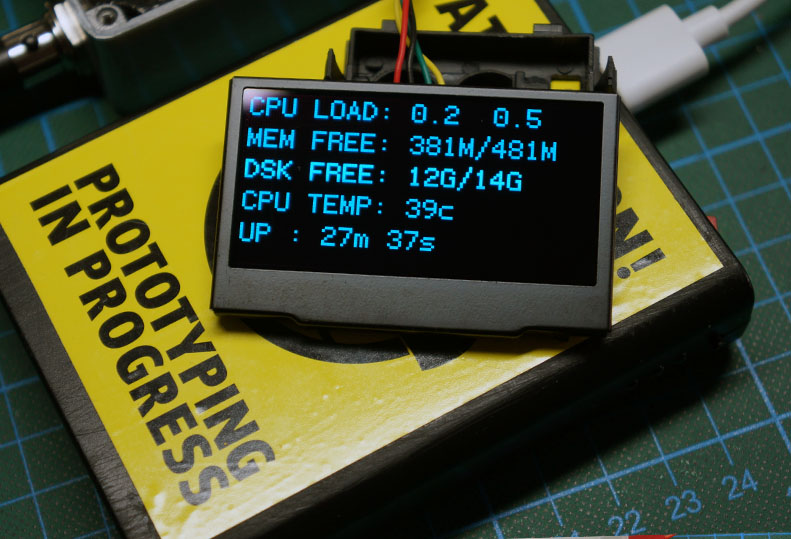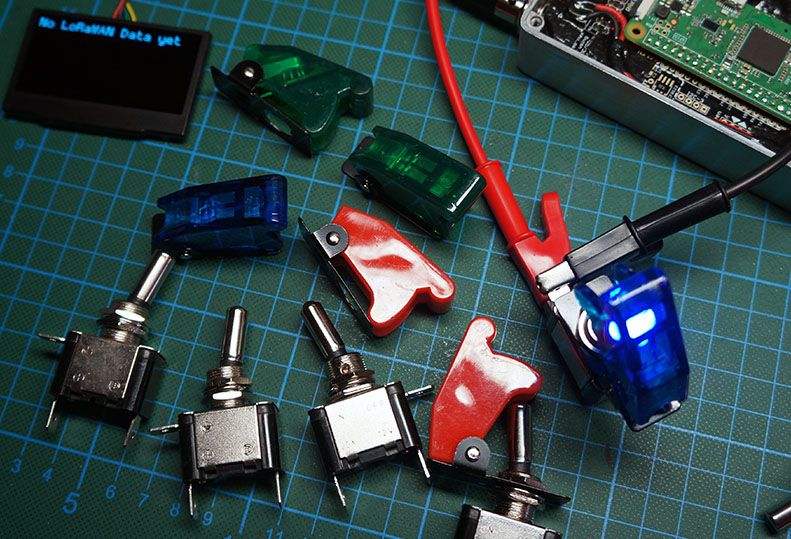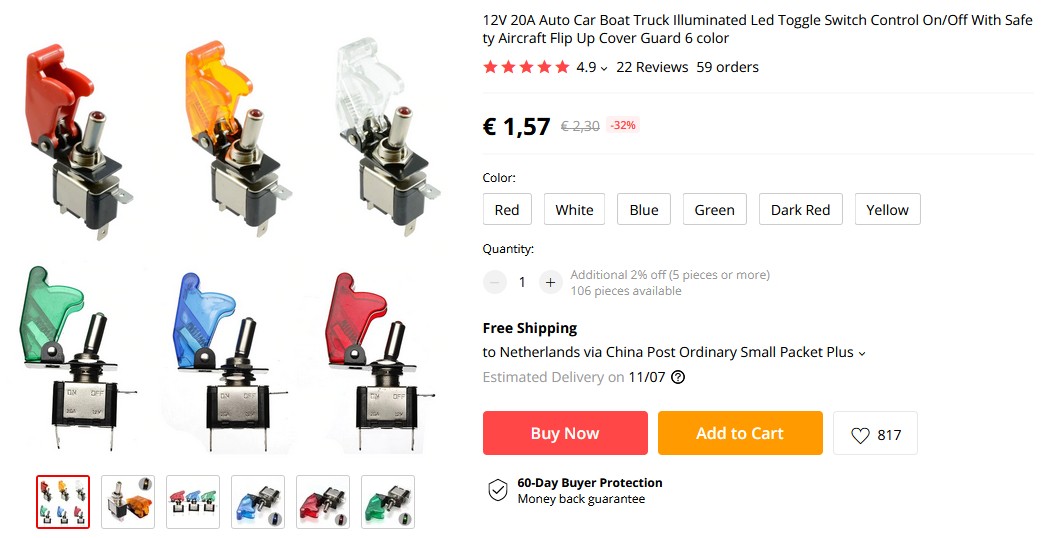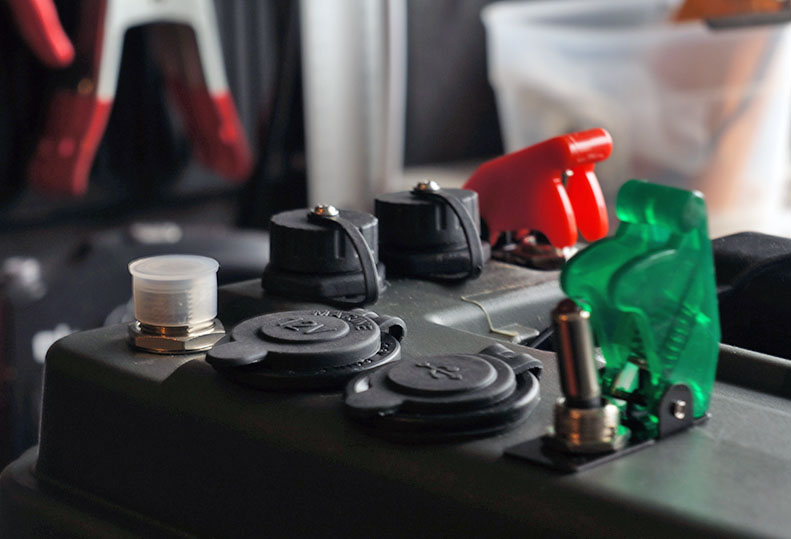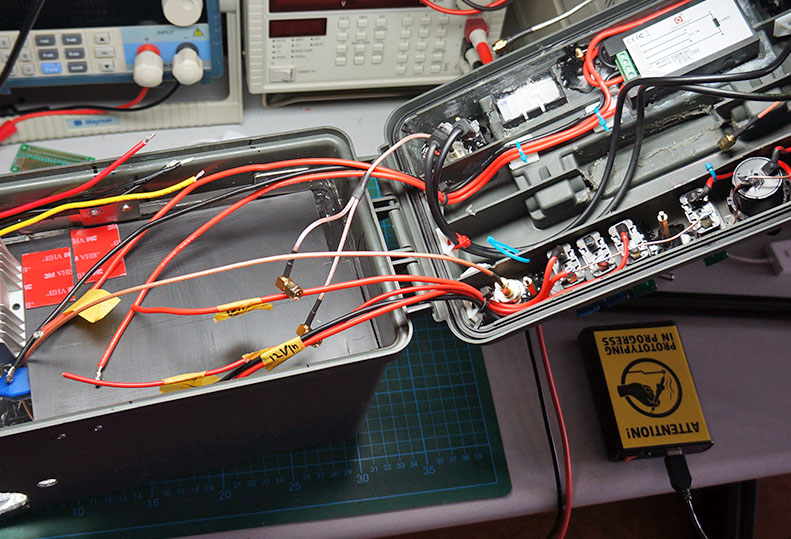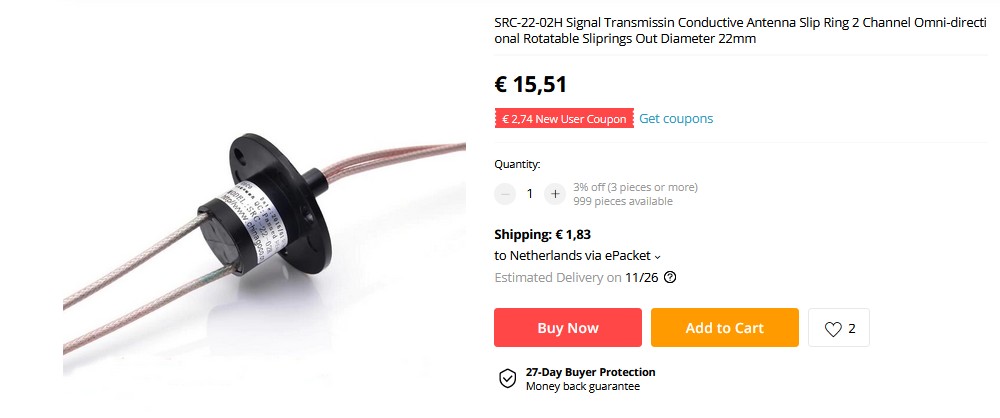Sadly not… too young & handsom I’m sure. Family matters got in way of early escape so only got to Reading hotel ~23:00 as everywhere shut!  Still early start in morning and gave chance to setup pop-up gateway at hotel (well what else would you expect
Still early start in morning and gave chance to setup pop-up gateway at hotel (well what else would you expect  ) so probably not a bad thing and can sink beers with those promised tomorrow night instead
) so probably not a bad thing and can sink beers with those promised tomorrow night instead 
quick peek 
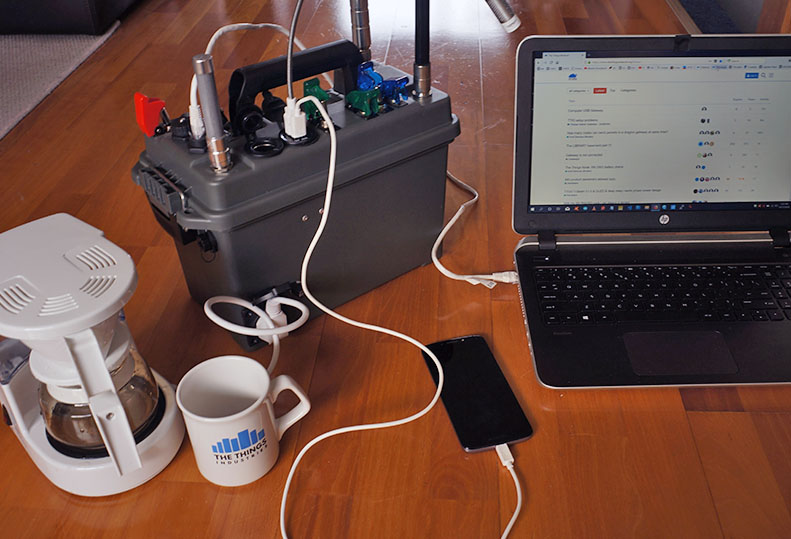
probably worlds first mobile TTN gateway that :
- gives you wired AND wireless internet
- connects to TTN over 4G , comes with its own GPS
- charges your phone, laptop and tablet when you’re wildcamping
- makes you a delicious cup of coffee
- has a 85000 mA battery
- can be grid AND solar charged
- has 220v AC , 5v DC and 12v DC outlets
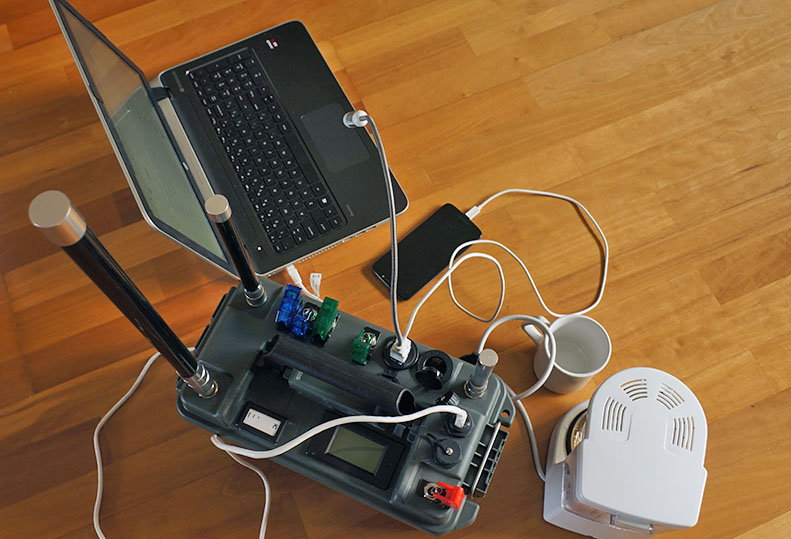
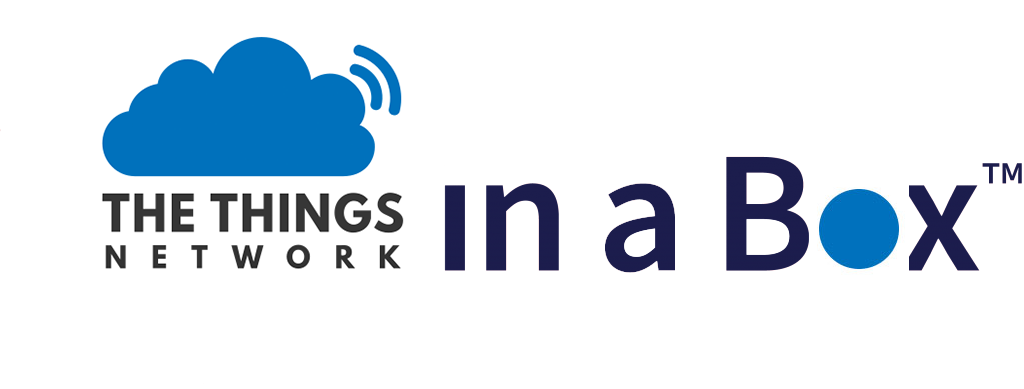
Wow !
Is the red thing a 'Remove Before Launch" device ?
that’s the main ‘in case of fire’ switch
 building a miniature 360 rotating directional antenna with this and a little steppermotor servo ? swr ? loss ?
building a miniature 360 rotating directional antenna with this and a little steppermotor servo ? swr ? loss ?
It’s entirely possible to design an antenna using only plate-capacitor coupling, removing the need for any actual sliding contact.
For example, decades ago when mobile phones were typically fixed-mount installations in cars instead of self contained devices, there was a whole class of antennas that were adhesively stuck to the outside of a window, and fed from a path adhesively stuck to the inside. There was an article in the amateur radio magazine QST about designing similar systems for other bands.
With something like this, you would probably have to include the effect of the device in the overall design and tuning of the antenna system.
For things like LoRa or really any modern low power scheme mostly implemented in a few ICs, a far simpler strategy could be to put the radio transceiver itself on the rotating assembly, and feed only power and data. Or even move data by some other wireless standard, and only need to feed power.
And then there’s the whole approach of rotating the antenna electrically rather than physically…
’ real ’ Moflon RF sliprings are a bit more expensive
So 16 U$ seems reasonable  and worth a try
and worth a try
a whole gateway + antenna on a rotating assemby … hmm, its possible of course (TTIG) and then only the power through a slipring.
idea is to autotrack a lorawan GPS node
Of course the conventional solution is to use a flexible coaxial cable and just not rotate beyond 360 degrees. Put the rotation stop somewhere least likely, and have software reverse around the circle if it needs to get to the other side of it.
You also have the problem that if you lose uplinks from the node for any reason and it moves, a directional antenna is probably worse than a good omnidirectional one for re-acquiring it, since the low duty cycle of LoRaWAN systems like TTN makes doing a rotational scan problematic - you’d have to be lucky enough to be aiming where it now is when it transmists for the directional antenna to be a win for acquiry.
I envision both types in one system
This film is interesting but not using a 360 degree slipring.
I just ordered one to see what is. It catched my interest.
With the increasing availability of ‘low cost/micro gateways’ am thinking of resurecting a project I started spring last year:
Take >50 usb powered micro USB dongle supporting WiFi (+1 Wired Enet Port) Routers:
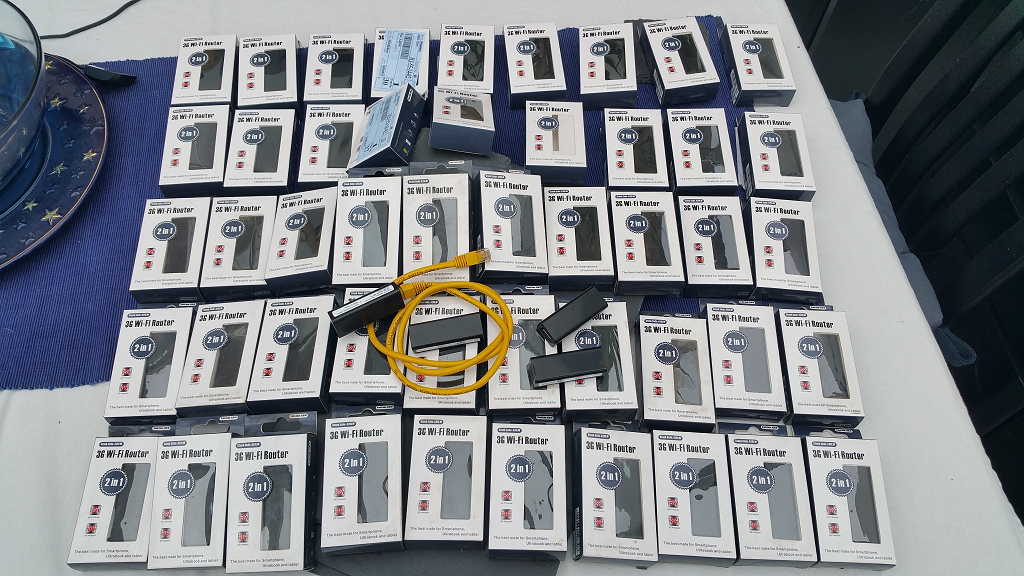
I cleaned out Maplins stock as they went into Administration and closed down Feb - May’18 
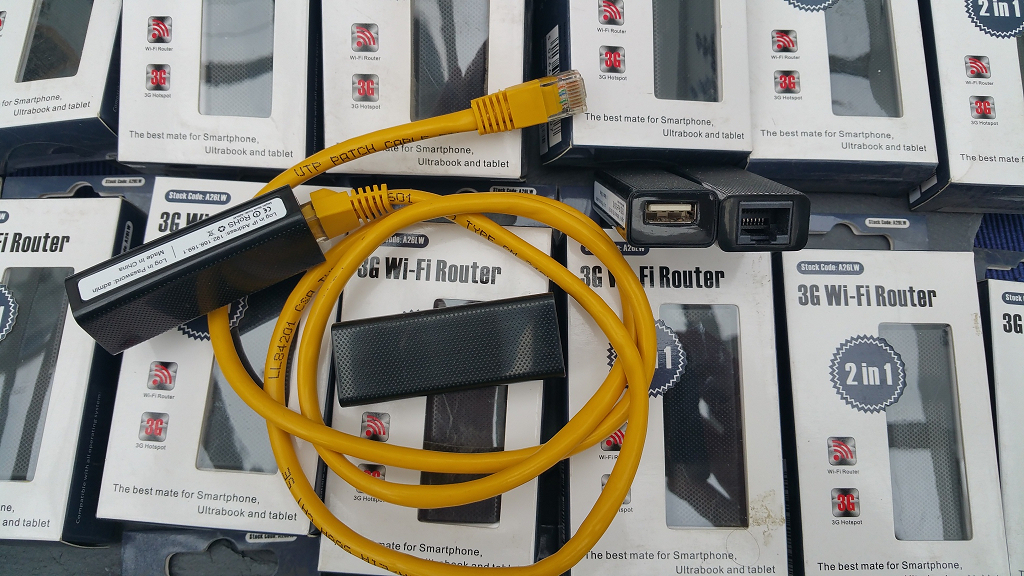
Have been using a couple of these for last 2-3 years for local GW/management access for pop-up/field test GW’s in the field either linking over Wifi or the ethernet port hooked up to e.g. Laird, RAK or Semtech IOT Starterkit GW’s, using laptop. phone or iPad over wifi etc. to manage & configure/update.
Add in a bunch of matching 3G Mobile dongles:
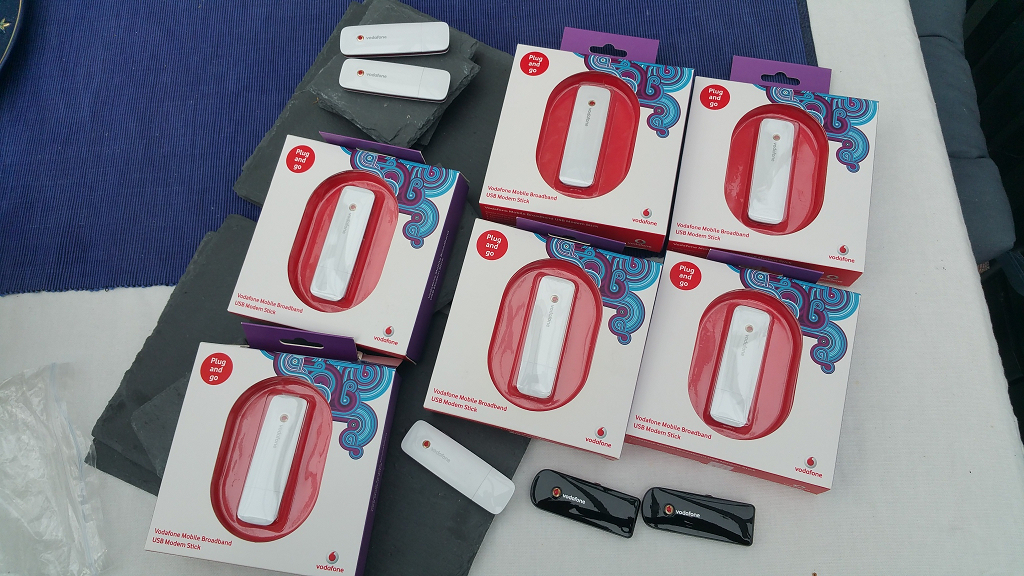
And some supporting SIM’s (with ~£5/mo data bundles on PAYG)
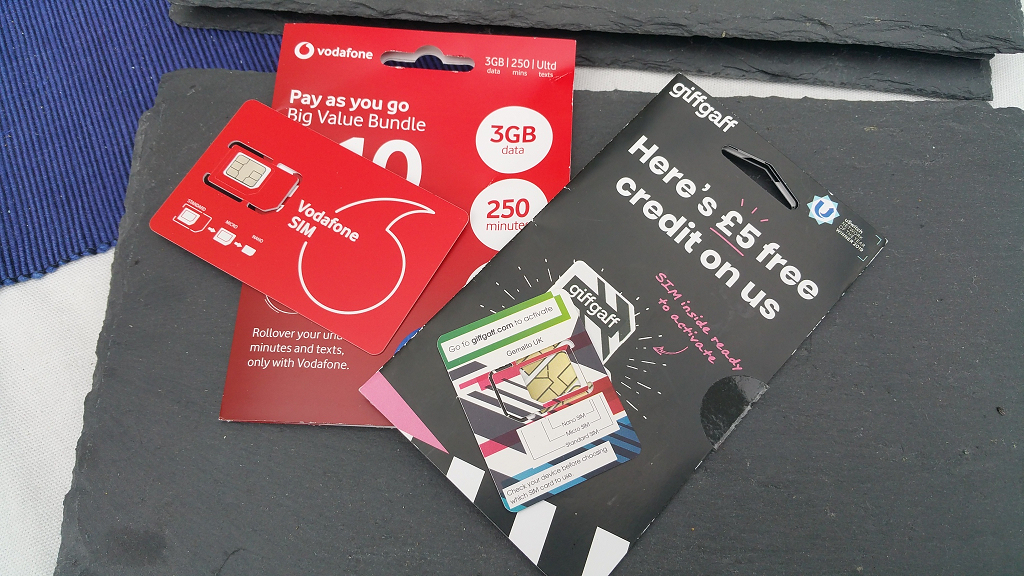
Yeh, I know numbers/volume reduced in pictures but got bored laying everything out for photo’s but you get the idea! 
Throw in matching LoRaWAN compliant micro GW’s e.g.:
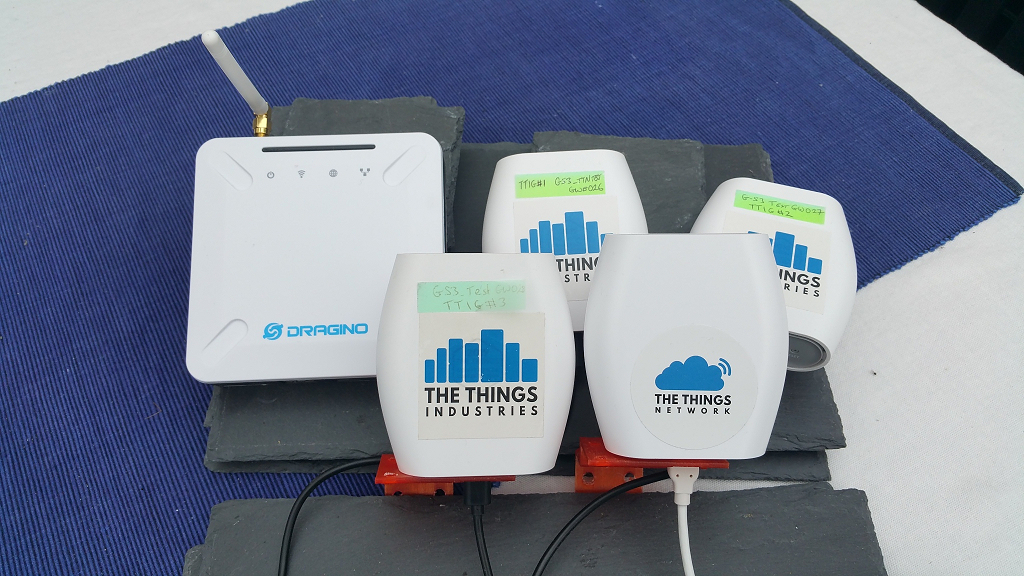
TTN TTIG’s (if only back end was more stable… 50+ in the field right now would be a nightmare wrt support…) technically the cheapest option, or maybe better would be Dragino LPS8’s (@edwin1 ) or perhaps RAK e.g. 7528 micro GW’s (I really need to talk with @kenyu again as they look to have been doing great things over the summer and in recent months with many GW’s, nodes and new modules of late but have been too busy to follow up…) or the new micro GW’s from e.g LpwanSpace/Maxiiot (MG6810) BIG product placement allowed topic and several others in the $80-$160 price category…
Or maybe adding in a few more of my OWL builds, more RAK pilots or other self builds - though @ $170-$230 starting to get expensive c/w the off the shelf micro builds…
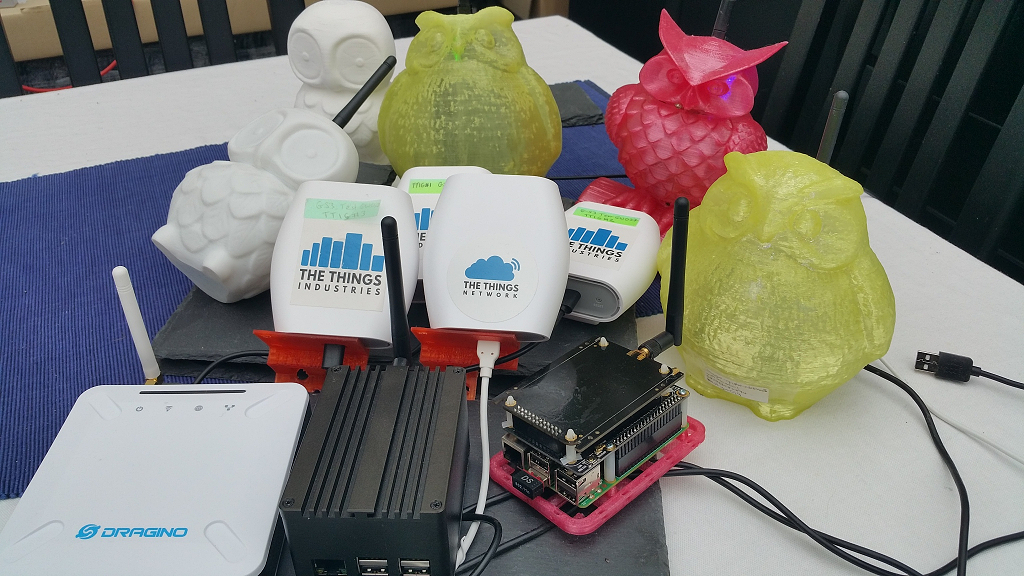
Can see a path to quickly adding >50 GW’s to existing portfolio if I can secure sensible GW locations around the country…potentially far more as many site hosts willing to allow access to local Enet or WiFi vs having to provide my own 3G Backhaul using kit such as this.
Big problem is that with £6-8000 equipment spend (allowing for accessories and sundaries) and then £5 x 12 x 50 = £3000/yr just for comms costs, how to fund and deploy given TTN is already a major cash sink and doesnt generate any revenue… 

Might also need to place some in outdoor rated housings (have a few already in stock) for some sites, possible adding solar power to go totally off grid or more remote sites - more cost and temp range a potential issue for the micro GW’s then…?!
Guess I will need to start asking around for appropriate sites and funds 
start renting them 
True!  but thats more for the professional/consulting side of what I do… for TTN community deployments it’s an idea but problem is the moment money changes hands ‘expectations’ increase and support becomes an issue - especially managing such a fleet… my 30+ (+ others under other users and running also on networks other than on TTN) already a bit of a nightmare to manage - especially in recent days and weeks with back end instability and non-functioning console (status/last seen) issues…
but thats more for the professional/consulting side of what I do… for TTN community deployments it’s an idea but problem is the moment money changes hands ‘expectations’ increase and support becomes an issue - especially managing such a fleet… my 30+ (+ others under other users and running also on networks other than on TTN) already a bit of a nightmare to manage - especially in recent days and weeks with back end instability and non-functioning console (status/last seen) issues…
Also still need to layout cash up front for kit and recover later through rental, though that works well for the ongoing comms costs…
It could be a ‘small’ business model, renting them to students/schools/small business/privatepersons who like to get a taste before investing themselfs , rent for a minimum period of 3 months including a node, a try it out kit with documentation.
So a new company is born - LoRaRent 
E 25,- for 3 months will cover
after 3 / 6 months they can buy the equipment for a reduced price
in cooperation with local TTN communities
I know of several companies offering such LoRaWAN bundles already (1 or 2 GW’s + 2-25 nodes & embedded back end or a subscription/cloud model) on short term deal with long term ongoing/buy out options and there is always the IoT-in-a-Box model from MyDevices, and I do something similar (customised/with support) on the professional side of my activities - at a cost! But perhaps I need to look at a stripped down low cost ‘TTN Community Bundle’! 
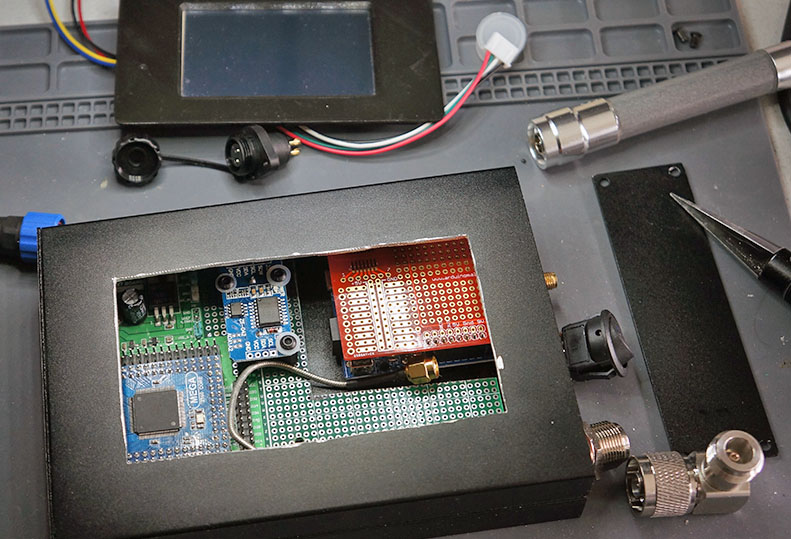
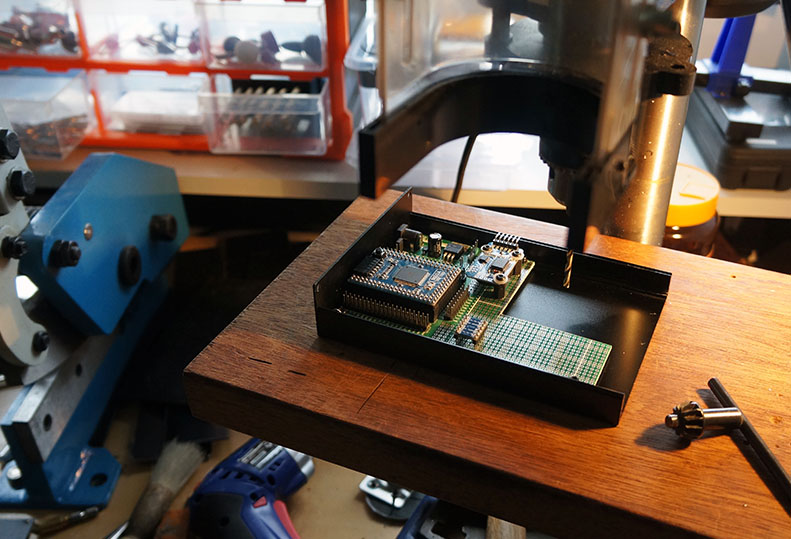
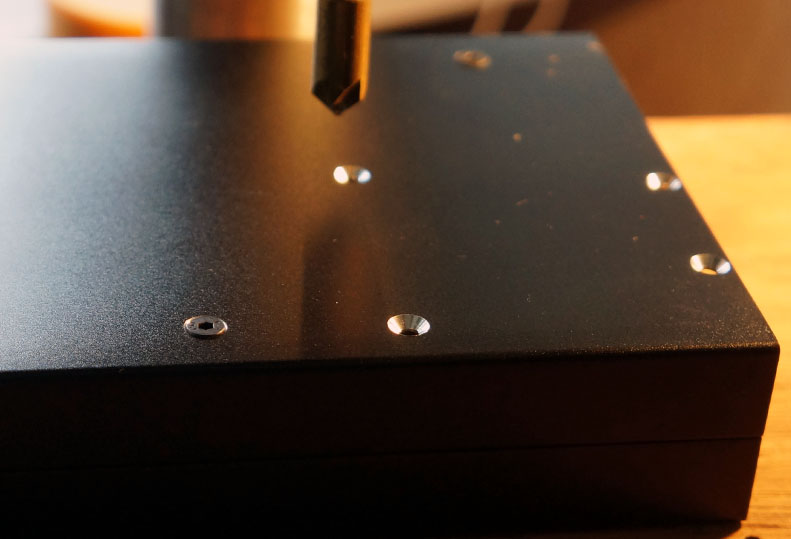
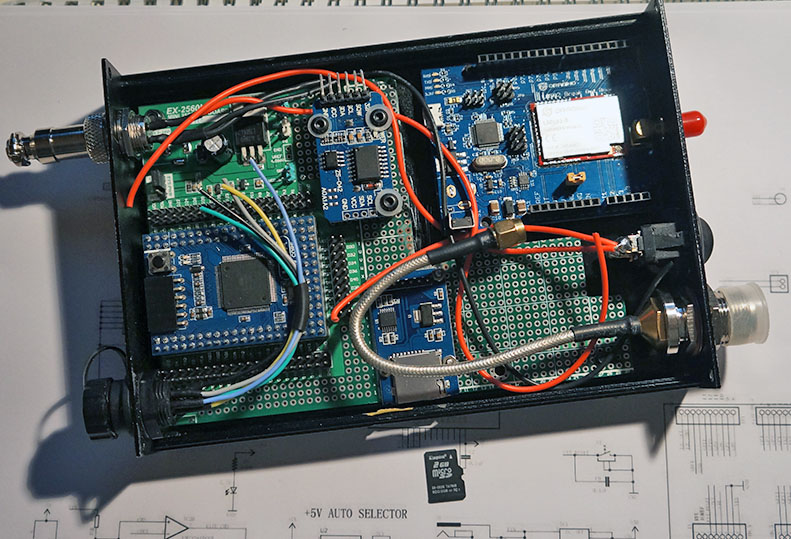
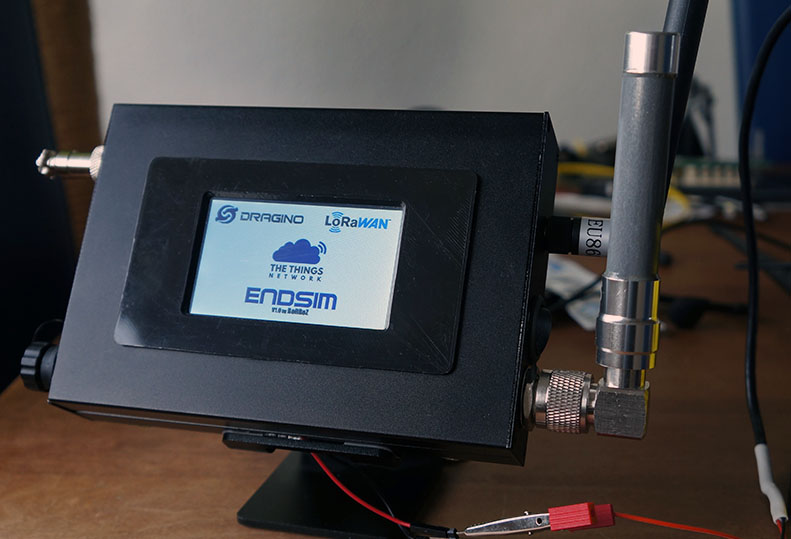
EndSim (end node simulator) POC under construction
Basically the idea is a programmable desktop LoRaWAN 1.0.3 class A / B / C node.
Use case (in my case) is application (dashboard) development and testing.
If you need for example, temperatures with a certain interval (or value), battery voltages, general I/O, lat/lon, in(de) creasing SF / power, anything you may need, OTAA or ABP, you can add 'templates on a SD card, insert card to device and clone info.
These setting are then available through the touchscreen menu.
For example : once every 3 hours and 52 minutes and 12 seconds a temperature in lpp format and a voltage, just set it.
Also there’s onboard GPS So device can be used as a mapper (auto/manual) ect.
Sometimes you need ventilation holes in your electronic project enclosure.
I just discovered that I can use ’ Wardrobe Cabinet Mesh Hole Black Air Vent Louver Ventilation Cover Stainless Steel Black color ’ for a nice finish 
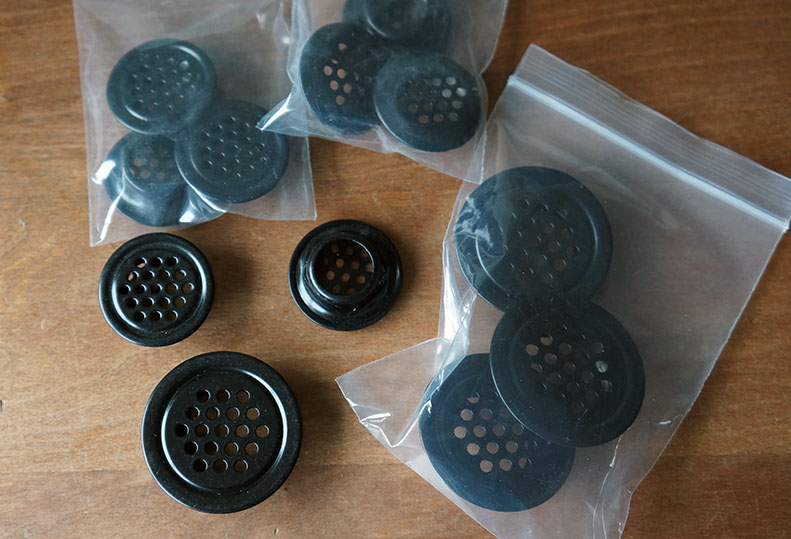
main part for the diy LoRaLock arrived
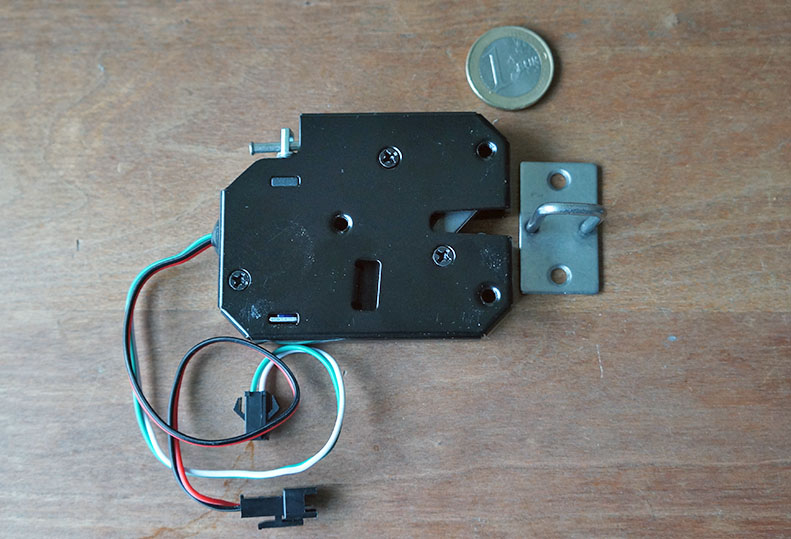
there are commercial LoRaLocks available from http://www.milocks.com/Lora/
